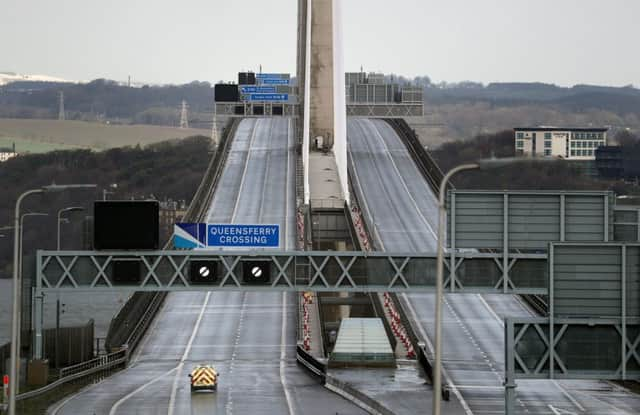Transport bosses pledge to tackle falling ice on Queensferry Crossing


It is due to follow the installation of ice sensors within months to help warn of build-ups.
The Scottish Government agency said it would identify the most suitable method of tackling ice on the bridge’s three towers and 288 cables.
Advertisement
Hide AdAdvertisement
Hide AdA spokesperson said the target was to implement that by next winter.
The two-year-old crossing was closed for two days last week after eight vehicles were damaged by falling ice. The problem was revealed by The Scotsman last March when it reported that three vehicles had their windscreens smashed in similar incidents.
Options for tackling ice include chains and rings to scythe through build-ups, applying heat or chemicals to the cables, or a retention system so ice melts rather than falls.
Professor Christos Georgakis, of Aarhus University in Denmark, and co-author of Cable Supported Bridges: Concept and Design, said: “The timeframe seems feasible. The approach should be two-fold – risk assessment through monitoring/prediction and risk reduction through an ice/snow retention system.
“Both can be achieved with relative ease.”
However, Neil Greig, of the IAM RoadSmart motoring group, said: “We welcome these developments but would ask why it has taken so long when the problem had been highlighted last winter.
“Without this delay, research from around the world could have been accessed already without having to wait for the most recent incidents.
“Any solutions that keep the bridge open will be welcomed by drivers but safety must be paramount. This means early warning systems must be put in place to prevent potentially very serious crashes.”
A Transport Scotland spokesperson said: “A de-brief of the circumstances around the closure will be undertaken. This will include a full review of operational procedures, using the additional knowledge obtained from recent events, and a further detailed investigation of prevention or mitigation measures trialled or implemented around the world, including research.
“Recommendations may include conducting research and development prior to any measures being proposed for implementation.”